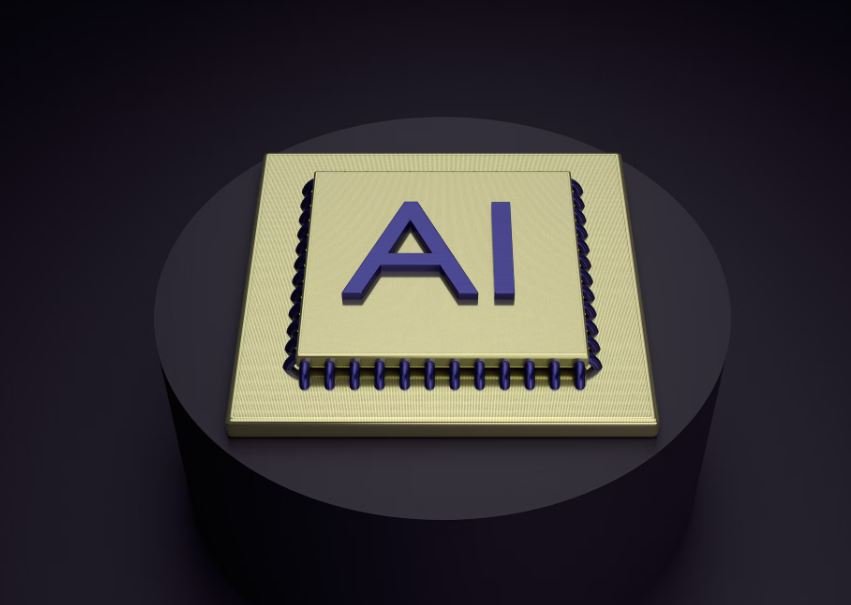What Is Video Footage?
Video footage refers to recorded moving images captured by a camera or device. It is a key component of various industries, including film, television, journalism, surveillance, and personal recordings.
Key Takeaways:
- Video footage is recorded moving images captured by a camera or device.
- It is used in numerous industries, including film, television, journalism, surveillance, and personal recordings.
- The quality of video footage can vary depending on factors such as resolution, frame rate, and compression.
- Video footage can be edited, enhanced, and manipulated using various software and tools.
Video footage serves as a visual record of events, allowing people to relive moments, analyze details, and share experiences. It has become an integral part of our daily lives, whether it’s capturing family milestones or documenting important news events. With the advent of smartphones and other portable devices, recording and sharing video footage has become increasingly accessible to a wider audience.
Video footage can be a powerful tool for storytelling and communication, as it enables viewers to witness events in a more immersive and engaging way compared to text or images alone.
The Characteristics of Video Footage
There are several key characteristics that define video footage:
- Resolution: Video footage can have different levels of detail and clarity, depending on its resolution. Common resolutions include High Definition (HD), Full High Definition (FHD), and 4K Ultra High Definition (UHD).
- Frame Rate: The frame rate determines the number of frames or images displayed per second in the video. Standard frame rates range from 24 frames per second (fps) to 60 fps or higher, with higher frame rates generally resulting in smoother motion.
- Compression: To reduce file sizes and enable smoother playback, video footage is often compressed using various codecs. Popular codecs include H.264 and H.265, which strike a balance between file size and video quality.
Video footage captured in higher resolutions and frame rates can provide a more detailed and lifelike viewing experience, but it also requires more storage space and processing power.
The Importance of Video Footage
Video footage plays a crucial role in various industries:
- Journalism: News outlets rely on video footage to report events as they unfold, providing visual evidence and a more comprehensive understanding of a story.
- Entertainment: Movies, television shows, and online videos entertain and engage audiences through carefully crafted video footage.
- Education: Video footage enhances learning by making complex concepts more accessible and memorable.
- Surveillance: Security systems utilize video footage to monitor and record activities for safety and crime prevention.
Video footage allows us to experience events, learn, and connect with others in ways that were once limited to our imagination.
Examples of Video Footage Use Cases
Table 1: Video Footage Use Cases
| Industry | Use Case |
|---|---|
| Film | Capturing scenes for movies |
| Journalism | Reporting breaking news |
| Surveillance | Monitoring public spaces |
| Personal | Recording family vacations |
Table 2: Different Video Resolutions
| Resolution | Description |
|---|---|
| High Definition (HD) | A resolution of 1280×720 pixels |
| Full High Definition (FHD) | A resolution of 1920×1080 pixels |
| 4K Ultra High Definition (UHD) | A resolution of 3840×2160 pixels |
Table 3: Popular Video Codecs
| Codec | Description |
|---|---|
| H.264 | A widely used video compression standard |
| H.265 (HEVC) | A more advanced video compression codec than H.264 |
Enhancing Video Footage
Video footage can be further improved and manipulated through editing and enhancing techniques such as:
- Color correction and grading
- Adding visual effects
- Adjusting brightness, contrast, and saturation
- Adding captions or subtitles
By enhancing video footage, we can create more visually appealing and impactful content.
In conclusion, video footage has revolutionized the way we capture, document, and share experiences. Its presence can be seen across a wide range of industries and has become an essential tool for storytelling, education, and documentation. As technology continues to advance, video footage will undoubtedly play an even more significant role in our lives.

Common Misconceptions
Misconception 1: Video footage must always be recorded in real time.
One of the most common misconceptions about video footage is that it must always be recorded in real time. While many videos are filmed in real time, it is important to note that video can also be edited and manipulated to show time lapse or slow motion effects. Additionally, video footage can be sped up or slowed down to fit different time frames.
- Video footage can be manipulated to show time lapse or slow motion effects.
- Video can be sped up or slowed down to fit different time frames.
- Not all video footage is recorded in real time.
Misconception 2: Video footage is always an accurate representation of reality.
Another misconception about video footage is that it always provides a completely accurate representation of reality. While video footage can capture real-life events, it is still subject to bias and manipulation. Techniques such as editing, camera angles, and selective framing can shape the narrative and influence viewers’ perceptions.
- Video footage can be subject to bias and manipulation.
- Editing, camera angles, and selective framing can shape the narrative of the video.
- Video footage may not always provide a completely accurate representation of reality.
Misconception 3: Video footage is always captured with high-quality cameras.
Many people believe that video footage is always captured with high-quality cameras. While it is true that professional videographers often use high-end equipment, video can be generated from various sources, including smartphones, security cameras, and webcams. The quality of the video footage can vary depending on the device used to capture it.
- Video can be generated from various sources, including smartphones, security cameras, and webcams.
- The quality of video footage can vary depending on the device used to capture it.
- Not all video footage is captured with high-quality cameras.
Misconception 4: Video footage is always accompanied by audio.
Some people assume that video footage always includes audio. While many videos have accompanying audio, it is not a requirement for video footage. Silent videos, captioned videos, and videos with only background music are all examples of video content without audio. The presence or absence of sound depends on the intent and purpose of the video.
- Video footage can exist without any accompanying audio.
- Silent videos, captioned videos, and videos with only background music are examples of video content without audio.
- The presence or absence of sound in video footage depends on the intent and purpose of the video.
Misconception 5: Video footage is always recorded by humans.
Many people believe that video footage is always recorded by humans. However, advancements in technology have made it possible for video to be captured by automated systems, such as surveillance cameras and drones. These automated systems can record video in various settings without human intervention.
- Video footage can be recorded by automated systems, such as surveillance cameras and drones.
- Advancements in technology have eliminated the need for human intervention in video recording.
- Not all video footage is recorded by humans.

What Is Video Footage?
Video footage refers to a sequence of moving images captured by a camera. It is a powerful medium that allows us to relive moments, document events, and convey messages effectively. In this article, we explore various aspects of video footage, such as resolution, frame rate, video formats, and more, through engaging tables and informative content.
Resolution Comparison
Explore how different resolutions affect the quality of video footage.
Framerate Impact
Discover how varying frame rates influence the smoothness of video playback.
Video Format Comparison
Compare different video formats and their advantages and disadvantages.
Aspect Ratio Examples
Observe how different aspect ratios can impact the composition of video footage.
Popular Video Codecs and Bitrates
Learn about various video codecs and their corresponding bitrates for optimal video compression.
Storage Requirements per Resolution
Determine the approximate storage space required for different video resolutions.
Standard Video Frame Sizes
Discover commonly used video frame sizes and their respective dimensions.
Durability of Storage Mediums
Find out the average lifespan of different storage mediums for video footage archiving.
Video Standards and Formats
Explore the various video standards and formats used globally.
Evolution of Video Quality
Trace the evolution of video quality over time and compare it to modern standards.
Video footage plays a crucial role in capturing significant moments in both personal and professional settings. Whether it is documenting historical events, creating engaging content, or preserving cherished memories, video footage is an irreplaceable form of visual communication. By understanding the technical aspects and considerations surrounding video footage quality and format, it becomes easier to appreciate and harness its potential.
Concluding Remarks
In this article, we delved into the world of video footage, examining its various elements, such as resolution, frame rates, formats, storage requirements, and more. Each table provided insightful data to enhance our understanding of these topics. As video continues to evolve and shape our digital experiences, it is crucial to stay informed about the latest standards and technologies in order to create captivating and immersive visual content.
Frequently Asked Questions
What Is Video Footage?
What are the different types of video footage?
How is video footage captured?
What formats are used for video footage?
What are the basic components of video footage?
How is video footage edited?
How is video footage used in different industries?
What is the significance of video footage in storytelling?
What are some professional tips for capturing high-quality video footage?
How can I legally use video footage created by others?




